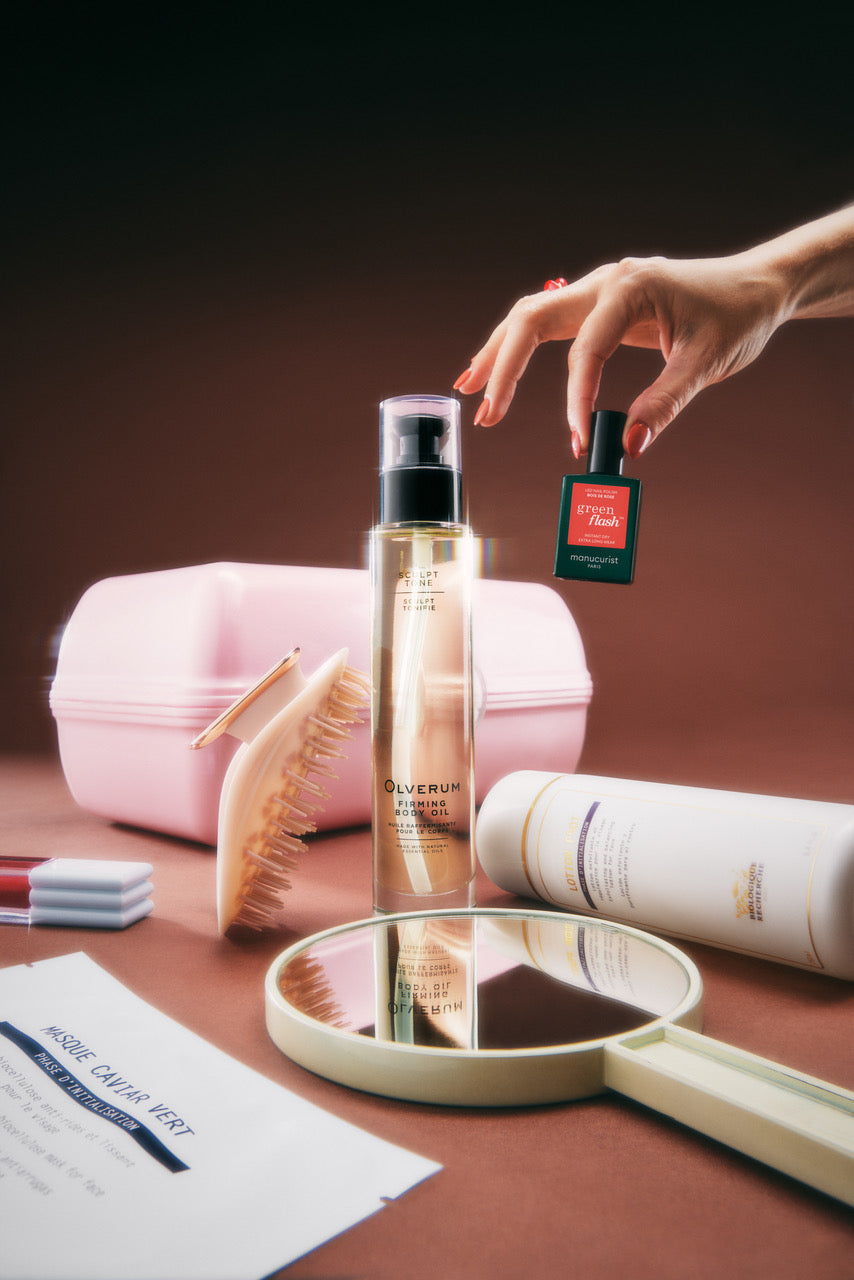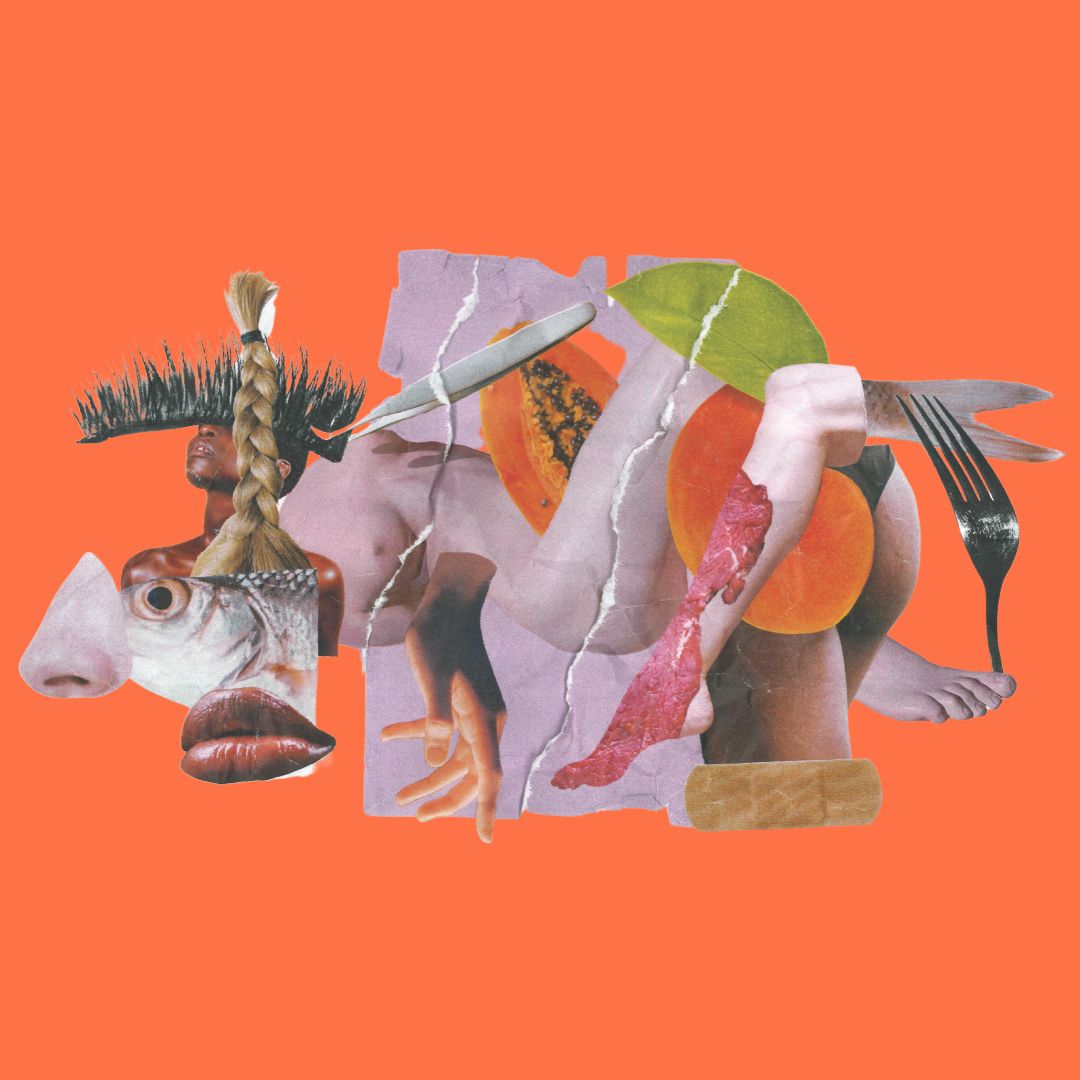Lesa Hannah presses “play” on the movie beauty moments we love to rewatch and finds out why makeup and hair in film is such an important part of the story.
In the 1946 movie Gilda, Rita Hayworth makes an unforgettable entrance as the title character. She flips her head back flirtatiously, making her gorgeous hair tumble down in waves, reveals her beautiful face and smiles coyly, speaking just one word: “Me?” Even if you’ve never seen the film itself, you’ve most likely seen the moment, which lives on in pop culture memory. (It also shows up in the 1994 movie The Shawshank Redemption.) It’s a scene that made an impression on film and TV makeup artist Linda Dowds, who cites it as a favourite. “It’s the head flip,” she says. “It’s the confidence. It’s the striking beauty. I mean, she is just stunning. Another word wouldn’t need to be spoken there. It tells you a story.”
And that’s the power of beauty in movies. While you might immediately think of all the hairstyles from films that we consider iconic, from Mia Farrow’s pixie in Rosemary’s Baby to Gwyneth Paltrow's pin-straight bob in The Royal Tenenbaums to Audrey Hepburn’s towering chignon and baby bangs in Breakfast at Tiffany’s, beauty contributes to movie storytelling in several ways both big and small. While the main objective is to facilitate the actor disappearing into their role—“I'm there to help pull out that character in the story,” says Dowds, who did Jessica Chastain’s makeup in The Eyes of Tammy Faye, which required an accurate portrayal of a real person during a particular period of time—it’s also used in far subtler ways. It can imply personality traits (bold, shy, self-important) or what the character is going through in that scene (having a breakdown, drunk, exhausted). “It doesn’t even have to be something that people really see consciously,” says Dowds, offering bare skin and the appearance of broken blood vessels as an example. “There are all kinds of things you can do when you’re doing the breakdown of a character. They’re subtle, but collectively you start to tell the story with that.”
Unlike with looks for red carpets or magazine shoots, the goal isn’t always to make someone look their camera-ready best; makeup can be used to evoke negative emotions about a character. Dowds refers to an Australian movie from the early ’80s called Careful, He Might Hear You. In it, a young boy is sent to live with his unpleasant aunt; to convey how he feels around her, the camera is always zeroing in on her red lips, which are pinched and severe looking. “You feel so much more for this little boy,” says Dowds. “Like, I started to dislike this woman.”
Of course, if we were to pinpoint the most memorable beauty scenes in movies, it would be the ones that involve a makeover. There’s no shortage of them, from Grease to My Big Fat Greek Wedding to Clueless to She’s All That. And though they can verge on cliché, there’s a reason why they’re popular. “It’s those moments where you have a transformation,” says Emmy-winning film-makeup artist Donald Mowat, who personally finds them sexist. “And people love it, especially on women.” For her part, Dowds agrees with Mowat and has a theory as to why they resonate. “When people don’t have the same confidence in themselves—maybe they relate to the character who gets bullied at school or is the ugly duckling—they look at that and think ‘Isn't that amazing?’” she says. “And when those characters later become heroes in the story? I think people are always looking for some kind of hero.” Think of how Tess’s life changes in Working Girl when she loses the big ’80s hair and makeup. She’s suddenly got the corner office and Harrison Ford as her boyfriend.
Ultimately, films are an escape from our daily lives. We want to be taken out of our current world and enter another one. But when something we’ve seen onscreen sticks with us, whether it’s an entire makeover or a lipstick shade or a hairstyle we are desperate to emulate, it brings us back to reality. “I think that as much as we’re looking for escapism, sometimes there’s something that pulls us back into how it translates in our own life,” says Dowds. “I think it touches us each of us personally in a different way. And so we hang on to that.”
Film Club
For your next movie night, check out one of these must-see films, each with its own unforgettable beauty moments from celluloid history.
Saturday Night Fever
John Travolta’s Tony Manero is the king of the dance floor at his local disco, and before a night out, he works “a long time” on his hair, as he tells his dad at the dinner table. How does the viewer know? There’s a montage of him blow-drying it to bouffant perfection in his bedroom while listening to the Bee Gees.
Hairspray
John Waters’s original Hairspray from 1988 captures a moment in time when American politics and civil rights were changing. Set in 1960s Baltimore, the film tells the story of a group of young people fighting the old guard that was opposed to racial integration while demonstrating the influence of Black Baltimore on youth culture. When Ricki Lake’s Tracy Turnblad trades in her hair-hopper bouffant for a flat mane that she literally ironed straight, she uses her hairstyle to announce her evolving political beliefs to the world and to differentiate herself from the ignorant attitudes of the previous generation.
Paris is Burning
Back in 1990, Paris Is Burning introduced New York City’s ballroom culture to the mainstream. Focusing on members of the Black and Latino queer communities, the documentary shares their compelling stories and creative ingenuity while depicting them with the humanity they deserved; it illustrates the fact that the desire to be accepted for who you are is universal. Many of the people in the film were faced with adverse circumstances, but performing allowed them to share their dreams and aspirations with others. Paris Is Burning shows that the drag queen’s legendary balls, makeup and dresses were a means to finding authentic identity.
Edward Scissorhands
Peg Boggs (played by Dianne Wiest) is the kind Avon lady who brings Johnny Depp’s Edward home. He has scars all over his face from the blades on his hands, and she attempts to cover them with makeup in order to help him conform, going so far as to call the company HQ to track down the perfect shade to use on Edward’s ultra-pale skin. It’s a tender moment that reveals her caring nature—a trait she shares with so many beauty pros IRL.
American Psycho
In a character-revealing scene, we’re given the entire skincare routine—which includes ice packs, pore cleansers, a gel body wash and honey-almond body scrub and peel-off facial masks—of white-privileged yuppie Patrick Bateman, Christian Bale’s Wall Street finance bro, and we realize just how obsessed the murderer is with his appearance.



